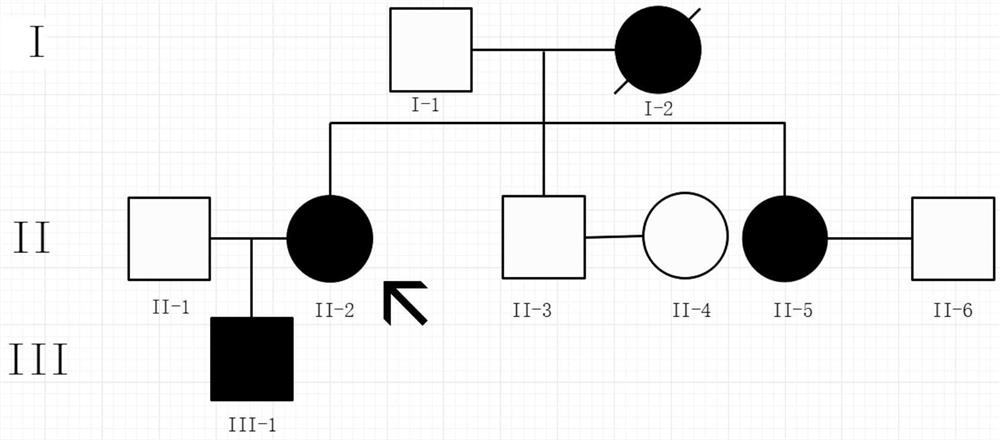Keshan disease genetic screening kit
A kit and technology for Keshan disease, applied in the directions of enzymes, biochemical equipment and methods, and microbial determination/examination, can solve the problem of failure to satisfactorily explain the pathogenesis of Keshan disease and its clinical characteristics, incomplete Identify the cause, etc.
- Summary
- Abstract
- Description
- Claims
- Application Information
AI Technical Summary
Problems solved by technology
Method used
Image
Examples
Embodiment 1
[0034] Embodiment 1 Kit of the present invention (Sanger sequencing kit)
[0035] 1. Kit composition
[0036] The kit of the present invention includes amplification reagents and reagents for Sanger sequencing.
[0037] 1.1 Amplification Reagents
[0038] The PCR amplification reagent is used to amplify a DNA sequence where the SNP site is located, and its composition is shown in Table 1.
[0039] Table 1 PCR amplification reagents
[0040] components concentration volume PCR mix 2× 600μl Primer pair 10μM 100μl pure water 2ml
[0041] The PCR mixture in Table 1 includes components required for conventional PCR such as Taq enzyme, dNTP, and magnesium ions.
[0042] The sequencing amplification primer sequence of SEPHS2 c.868delG is as follows:
[0043] Forward primer: TGGCAGATTATGAATAACAAAGGACACT (SEQ ID NO.1), reverse primer: GCCCACCAATGGCTGGATA (SEQ ID NO.2);
[0044] Or, forward primer: TTTCCCTTTTCCACAATGCCAACG (SEQ ID NO. 3),...
experiment example 1
[0073] Experimental Example 1 Verification of Keshan Disease Mutation Gene
[0074] The inventor found a selenoprotein-related SEPHS2 gene mutation in the blood sample DNA of a Keshan disease patient. Compared with the NM_012248.2 transcript in Genbank, this mutation is a frameshift mutation c.868delG, the deletion of the 868th base G, resulting in a change in the base sequence of the DNA template chain, resulting in a loss of function (LOF) of the protein , the deletion of this base leads to the loss of translation of the subsequent amino acid at position 290 (glutamic acid). This mutation is a rare mutation with high pathogenicity.
[0075] Investigating the family of the patient with the SEPHS2 gene mutation (referred to as "patient A"), it was found that the brother of patient A did not suffer from Keshan disease, and the mother, sister and son of patient A all suffered from Keshan disease. The family diagram is as follows figure 1 shown.
[0076] The SEPHS2 gene of pati...
PUM
 Login to View More
Login to View More Abstract
Description
Claims
Application Information
 Login to View More
Login to View More - R&D
- Intellectual Property
- Life Sciences
- Materials
- Tech Scout
- Unparalleled Data Quality
- Higher Quality Content
- 60% Fewer Hallucinations
Browse by: Latest US Patents, China's latest patents, Technical Efficacy Thesaurus, Application Domain, Technology Topic, Popular Technical Reports.
© 2025 PatSnap. All rights reserved.Legal|Privacy policy|Modern Slavery Act Transparency Statement|Sitemap|About US| Contact US: help@patsnap.com



